For the first time in history, Nikon released a camera that carries the mark II addition in its name. It is indeed the same camera as the mark I, but with a lot of improvements. I reviewed the Nikon Z 6II to find out if it is worth the upgrade.
Back in 2018 I reviewed the Nikon Z 7. I got the opportunity to compare this Nikon full frame mirrorless camera with the Canon EOS R and the Sony a7R III. Although I’m a user of Canon equipment, I found the Nikon Z 7 the best camera. It has a wonderfully ergonomic design, an almost fully functional touch screen, the buttons and dials were of good quality, and its body is not too small. Of course, these three cameras each produced great quality pictures.
There were some downsides to the Nikon Z 7. One of these was the single card slot. Also, the autofocus was not that great. Don’t be mistaken, it worked well enough for most kinds of photography, but it felt short compared to a camera like the Sony a7R III, and even the Canon EOS R.

I compared these three wonderful cameras and found the Nikon Z7 the one I liked the most, closely followed by the Canon and Sony. Now Nikon has released the second edition of the Z7 and it's little brother, the Z6. How does it compare?
There were a lot of complaints all around the internet about the Nikon Z 7. These complaints also applied to the Nikon Z 6, which was basically the same camera with a lower resolution. But now Nikon has released the second edition of both the Nikon Z 7 and the Nikon Z 6. It even got the mark II addition, something Nikon has never done before. I got a chance to review the Nikon Z 6II for a month and a half to find out how much this second edition is improved.
How the Nikon Z 6II Looks
The Nikon Z 6II holds no surprises. It is exactly the same camera as its predecessor. It has the same buttons, the same dials, the same menu, and the same ergonomics. If you would have both cameras next to each other, you wouldn’t know which one is the first version and which one the second version.
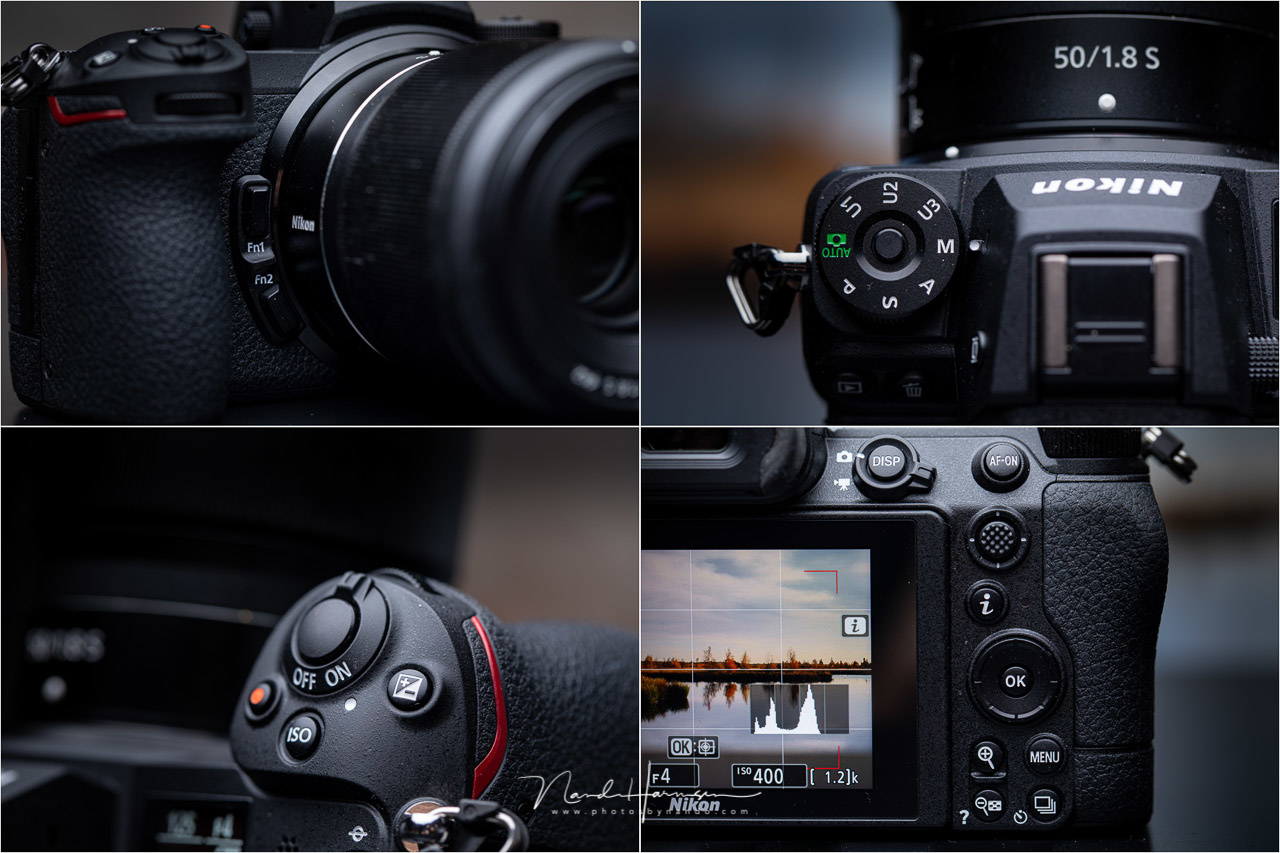
A quick overview of the Nikon Z6 II. It is exactly the same camera as its predecessor. Every improvement is hidden inside.
There is a very small difference in weight and size due to the addition of a second Expeed 6 processor. It made the camera 30 grams heavier and 2 mm thicker, something you won’t notice at all. This second processor makes many of the improvements possible.
Another big difference you will notice is the second card slot. It accepts a UHS-II SD card next to the XQD/CF Express Type B card. Now you have the ability to save your photos to both cards at the same time. The Nikon Z 6II also has a new battery with a 10% larger capacity. You’ll be happy to hear it is downward compatible with the older batteries.
There is not much to say about the exterior of the camera, its buttons, and the customization options. Nothing has changed on that part, which is a good thing. Two buttons on the front are the only ones that are fully customizable. All other buttons have only one function, although you can change the behavior for some. The Nikon Z 6II does have a quick menu that you can activate by pressing the "I" button and it holds twelve functions. This quick menu is fully customizable.
The LCD screen of the Nikon Z 6II has the same touch screen functionality as its predecessor. You can use it for the menu, but also to place the AF area. Or the AF point depending on the settings you have. Unfortunately, there is still no possibility to use swipe-AF. You will have to use the joystick for that, or to tab your finger on the location you would like to focus. This does not work when you use the EVF.
What Has Been Upgraded?
Nikon seems to have listened to some of the complaints about the previous version of the Z 6 and Z 7. The upgrade addresses a lot of those shortcomings. I already mentioned a second Expeed 6 processor, a second card slot, and the new battery. But these are just the tip of the iceberg. Let’s have a look at all the changes Nikon made.
- Double card slot (ZQD/CF Express Type B and UHS-II SC)
- New battery with a 10% larger capacity
- Second Expeed 6 processor
- 14 frames per second burst instead of 12 frames per second (in 12bit raw files)
- Memory buffer is increased to 124 raw files (instead of 35 files, both in 12bit raw)
- Improved AF tracking
- Eye-AF is now available in wide area AF
- Low light AF is improved with 1EV
- EVF has a shorter blackout
- USB-C power supply
- Video recordings in 4K 60fps with 1,5crop is available through a firmware update in February 2021
- Eye-AF is now available for video recordings
- More possibilities for video recording with external recorder
- It is possible to shoot video in raw format, but you will have to pay for this update
- Interval and time-lapse movie is now possible
- You can set the shutterspeed up to 900 seconds (but you need to activate this in the menu)
- A new vertical grip is available, with a second set of controls
As you can see, there are a lot of improvements. Some are small and almost insignificant, others have made the Nikon Z 6II a more capable machine. I think the improved autofocus capabilities and the shorter EVF blackout are most welcome, but that also depends on your own personal preferences.
The ISO Capabilities and ISO Invariance
Unfortunately, I didn't test the ISO capabilities with the Nikon Z 7, back in 2018. And even so, comparing it with the Nikon Z 6II would be dishonest due to the different sensor resolutions. But I was curious about the ISO capabilities and the ISO invariance to some extent. So I took a series of photos with different ISO settings while keeping the exposure the same.
I have done the same with the camera on ISO 400 and a deliberate underexposure to see how a correction in Adobe Lightroom Classic would turn out. If the ISO invariance is good, there would be almost no difference between the results with the correspondent higher ISO value. The noise levels should be almost the same. You can judge for yourself with the results below.

When the photo is deliberately underexposed, you can correct this in post processing. The increase in noise levels looks similar to a raise in ISO
These tests are nice, but I wanted to see how it works in real-life situations. I made a landscape photo with the exposure on the brighter parts of the image. In Adobe Lightroom Classic I could raise the shadows quite a lot, with resulted in the expected increase in noise levels. I found it to be very usable, and the noise levels aren't that much of a problem. Still, you might want to use other methods on these occasions, like exposure bracketing.
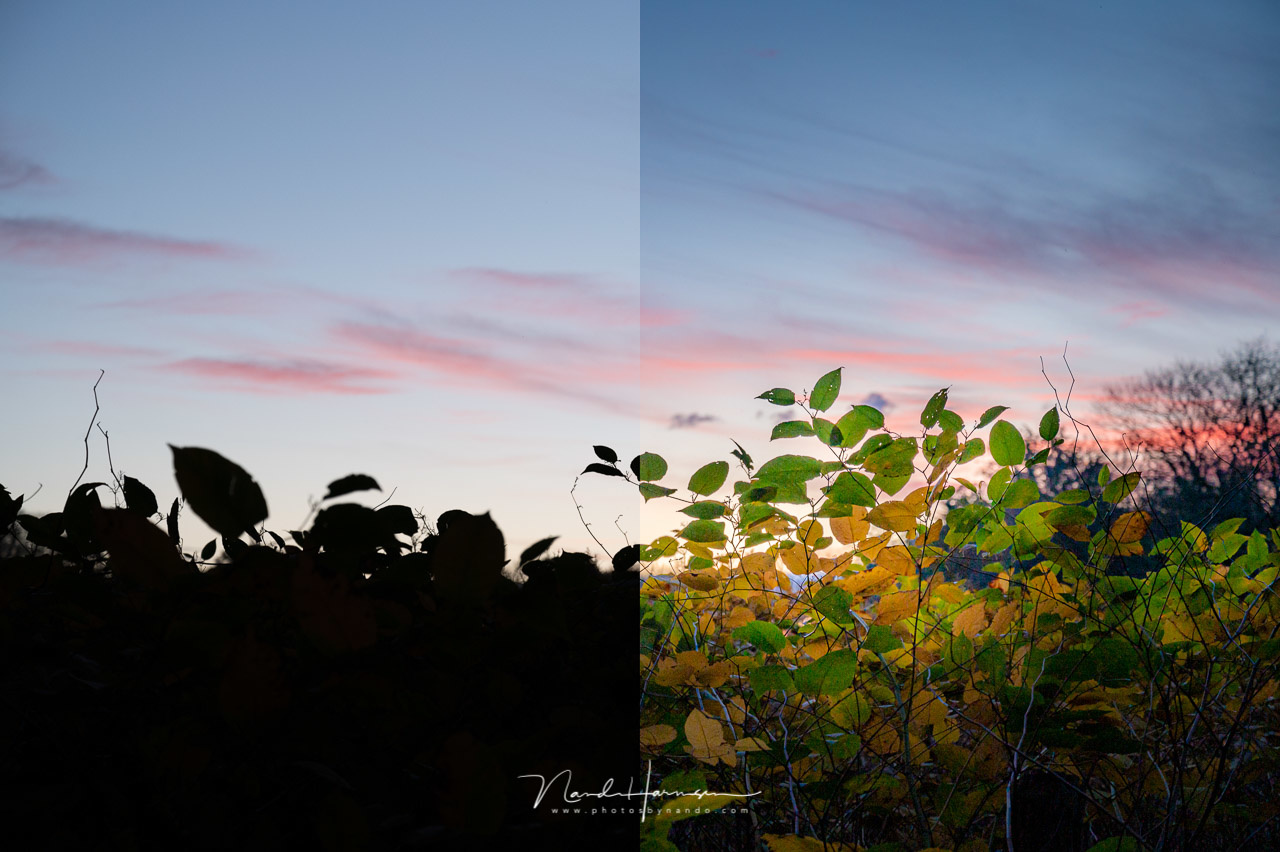
The shadows are lifted in post processing. Although the noise levels will increase in those parts, it is still a very usable result.
What About the Improved Autofocus Capabilities?
One of the most important updates is the improved autofocus. It is more sensitive, allowing you to autofocus in with -4.5 EV. This is a one-stop improvement over the first edition of the Nikon Z 6. If you are curious, -4.5 EV is like a moonlit landscape. Do you encounter situations that are even darker? The Nikon Z 6II has a very bright green LED to illuminate the subject. Be aware, it might blind people for a second. You should warn them!

When it becomes too dark, the AF assist light will help you to achieve focus. Be aware, this green LED is very bright.
Besides the increased sensitivity, the Eye AF now works under a wider range of settings. This includes wide field AF and movies. The Eye AF has a setting for humans or animals, which can be set in the menu. Unfortunately, there is no option to let the camera decide. You have to manually change the Eye AF between humans and animals.

THe Nikon Z6 II has an improved AF system, but you still need to switch between human eye AF and animal eye AF. There is no automatic detection. The eye detection now works with wide field AF also.
I found the Eye AF for humans very capable and it detects a human eye without a problem. If the detection of the eye is somehow lost, it will pick it up again swiftly. Also, in bright backlight situations, the Eye AF works without much problem. The eye has to be large enough for the camera to detect, both in strong backlight situations as normal situations. Otherwise, it will switch to body AF.
The animal Eye AF works perfectly for dogs. But it won’t work with all other animals. When I was standing about 2 meters from a deer, the camera wasn’t able to detect the eyes. I had no chance to test this with birds, because I couldn't get close enough for that.
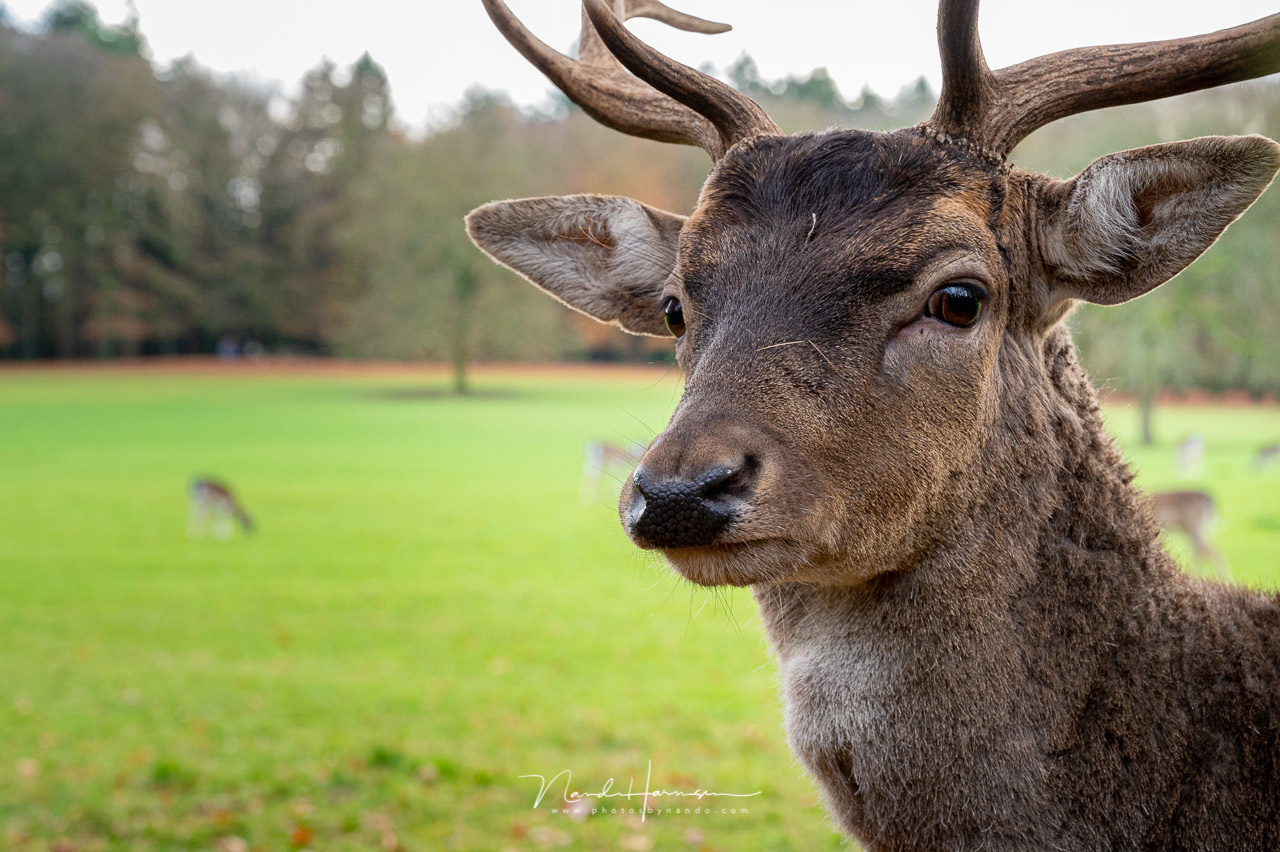
The animal eye AF did not work with this deer. It could not recognize the eye. I also tried human eye AF, but that didn't not work also.
Shooting Portraits With the Nikon Z 6II
I used the camera for a couple of portrait shoots. One of those was in a natural light situation, just before and during sunset. For the other two sessions, I used my living room studio with a Profoto B10 flash unit, triggered by the X-sync contact of a Profoto A1 flashgun for Canon (unfortunately I don't have a trigger dedicated for Nikon).
Shooting portraits is lots of fun with the Nikon Z 6II. Its Eye AF works perfectly and it nails the perfect focus almost every time. Only with a strong backlight it can hesitate a bit, but that is barely a surprise.
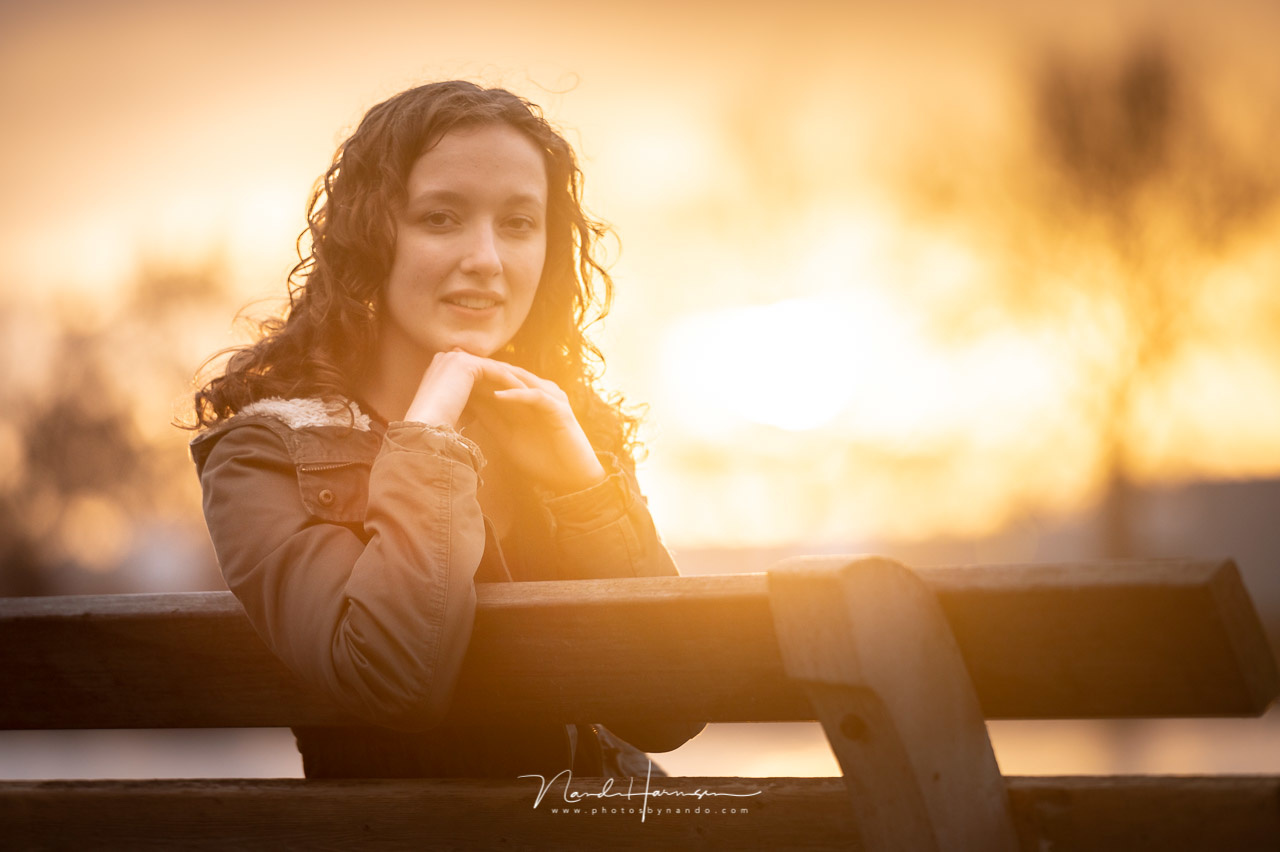
WIth this back light the eye AF managed to get a fix on the eyes. But I had the impression it took a bit longer to achieve a good focus.
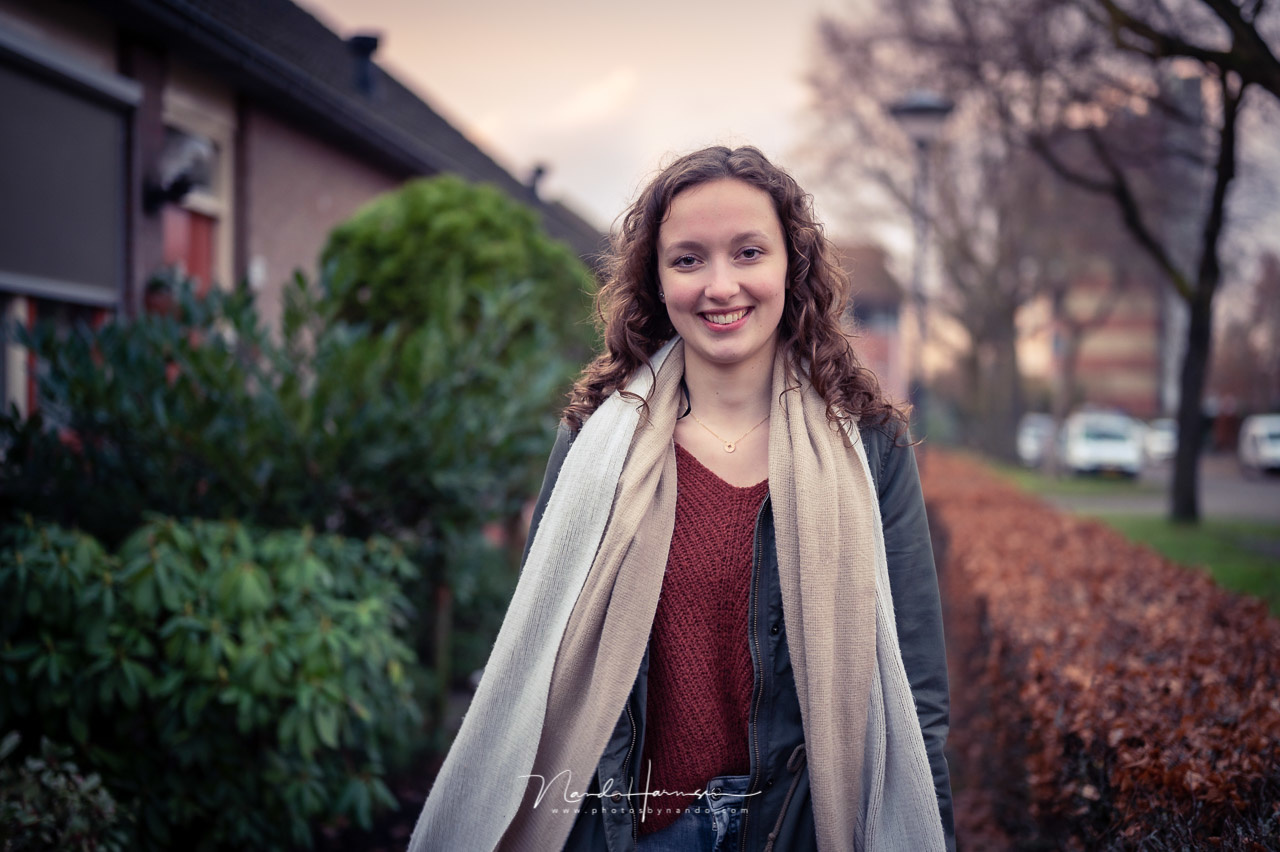
Walking down the street (I was walking backwards while shooting). The eye AF did a good job and the focus tracking made shooting this scene very easy.

A living room studio portrait of my daughter. The Nikon Z6 II performs very well in these environments. Turning off the exposure simulation makes it more easy working with studio lights and the x-sync shutter speed.
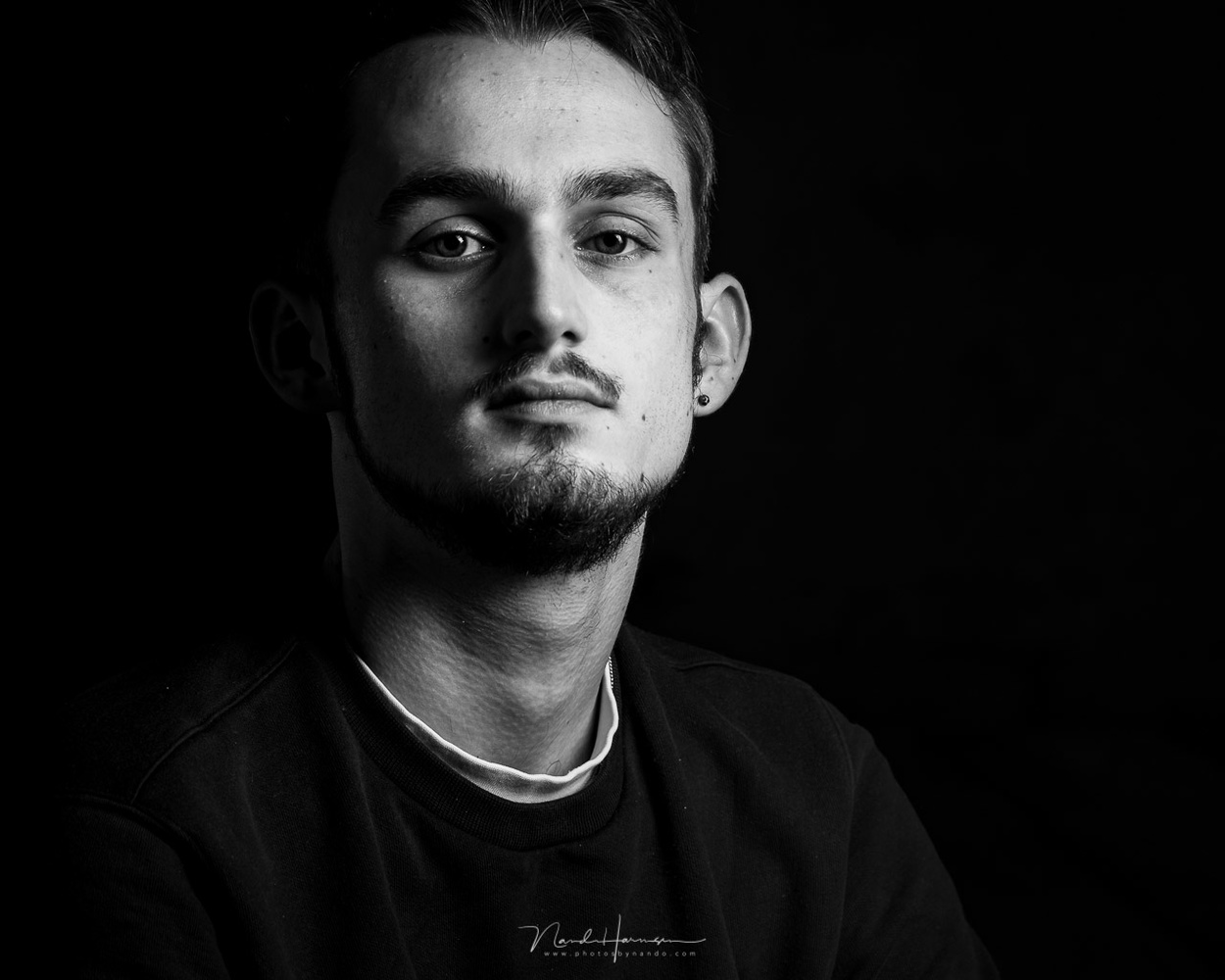
Again a portrait in my living room studio, this time with my son. I used a 1x3" striplight and a reflector.
Shooting Landscapes With the Nikon Z 6II
There are a lot of photographers who want the highest resolution possible for landscape photography. The Nikon Z 6II only has 25mp, which I find more than enough for almost everything. The Nikon Z 6II does not support super-resolution by shifting the sensor.
I find a good dynamic range more valuable and the Nikon Z 6II performs very well. As you have seen with the ISO capabilities, it is no problem to lift your shadows up by even 4 stops. This can eliminate the use of graduated neutral density filters. Unfortunately, the Nikon Z 6II does not have a fully articulating screen. If you shoot in portrait orientation, the tilted screen is not of much help.
Many of the first landscape photos I took turned out much too dark when I opened the photos in Lightroom. It took a while before I discovered why. If you have the D+ Active Lighting activated, the camera will automatically underexpose to prevent blown-out highlights. Although the camera will correct this when shooting jpeg, the raw files will show an underexposure. It is something to keep in mind if you are using raw file format, and use exposure to the right.
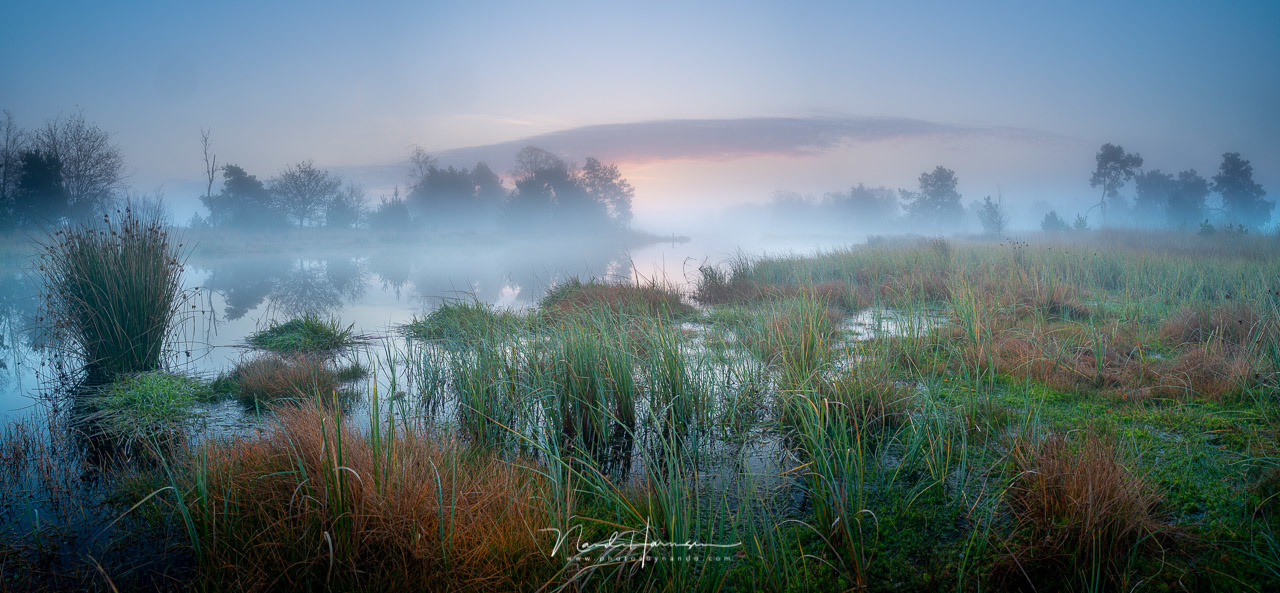
Although 25mp may seem not too much, in most occasions you won't need more for landscape photography. If you do, it is always possible to shoot a panorama, like this one. It's composed out of three individual shots.

Even in the darkest twilight the EVF works great. You might want to lower the brightness a bit, and always keep an eye on the histogram The AF works perfect in these light situations.

The Nikkor 70-200 lens works perfect with the adapter. The AF feels fast and accurate, just as expected. It means you can keep on using older Nikon lenses without problem.
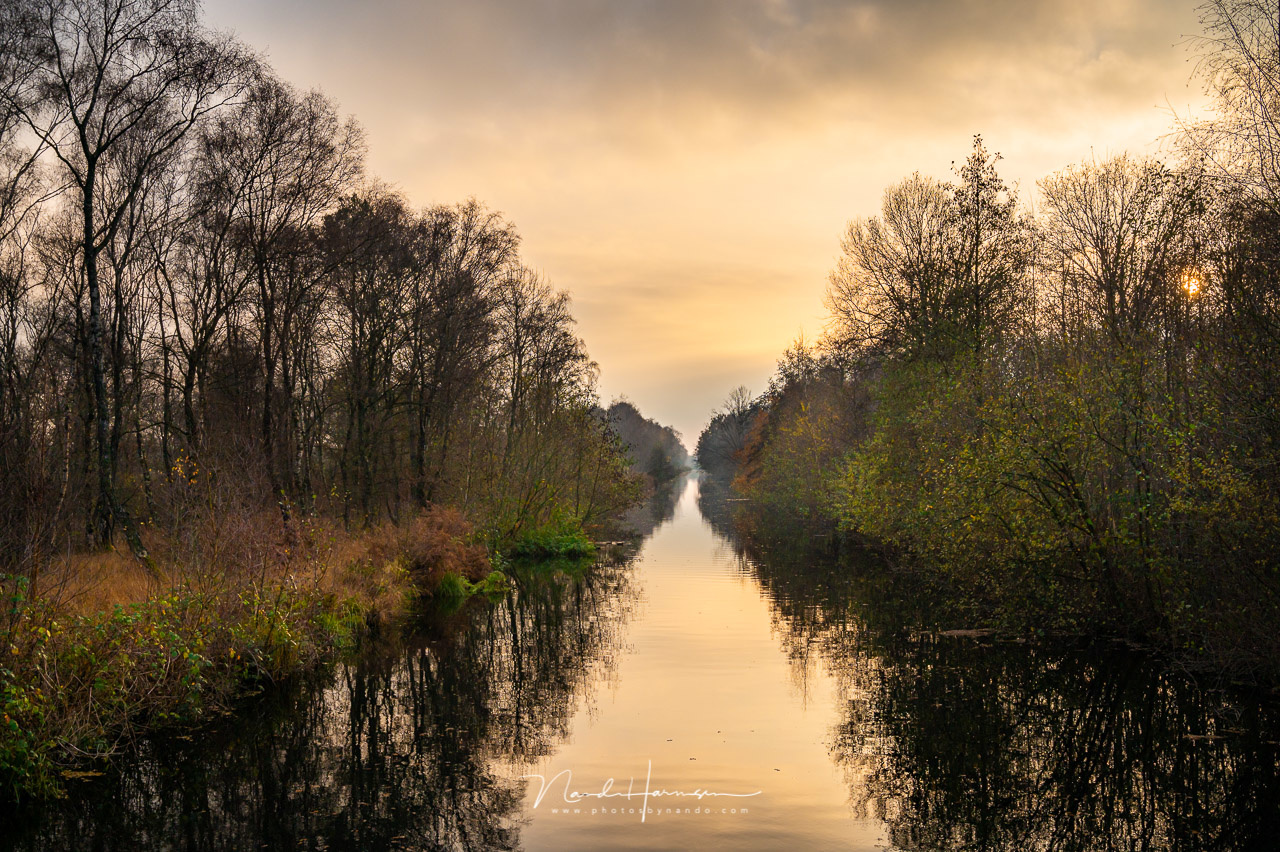
Thanks to the dynamic range it is easy to lift the darkest parts of the photo. Just make sure you don't get overexposed areas that cannot be corrected anymore. But that is basic exposure knowledge, I guess,

Shooting the last autumn colors with the Nikon Z6 II. I love using the camera for this kind of photography.
Shooting Action With the Nikon Z 6II
The second Expeed 6 processor improved the AF tracking, Eye AF functions, and an increase in frames per second. Together with the larger buffer, the Nikon Z 6II seems to be more suitable for action photography. Nikon also improved the camera by a shorter EVF blackout, but it doesn’t tell us by how much.
When testing the action photography capabilities, I found the EVF blackout is still too long for effective action photography. It makes tracking the subject very difficult, especially with erratic movements. You will always be too late when following a moving subject. The series down below shows an example.

This series is shot with 14 fps, with animal eye-AF and AF tracking. The blackout in the EVF works against you, making panning a very difficult task. Especially when the speed is not constant. You will loose your subject in the EVF
Due to the EVF blackout, you will lose your subject more often than you like. If the subject is not moving with a constant speed parallel to the camera, the hit rate will drop significantly. The EVF blackout imposes less of a problem if the subject is moving towards the camera. Although you will get used to this blackout, and you will learn to shoot with it, I find the Nikon Z 6II not the best camera for action photographers.

WIth a more constant movement like in this example, the blackout of the EVF is less of a problem. I find the Nikon Z6 II not the best camera for action photography.
Recording Video With the Nikon Z 6II
I did some video shots with the Nikon Z 6II. But that was only in full HD with 25 fps. Since I don’t have any experience with judging video capabilities, I will leave that up to the experts. But I can tell you the camera has some major improvements, like the Eye AF during video recordings, and a larger resolution after the update in February 2021.
If you’re serious about filming, there is an option for recording video in raw format. You will have to pay for this update, though. I think this option is for the more professional user. But then again, if you’re that serious about shooting video you will probably choose a camera that is more specialized in video.
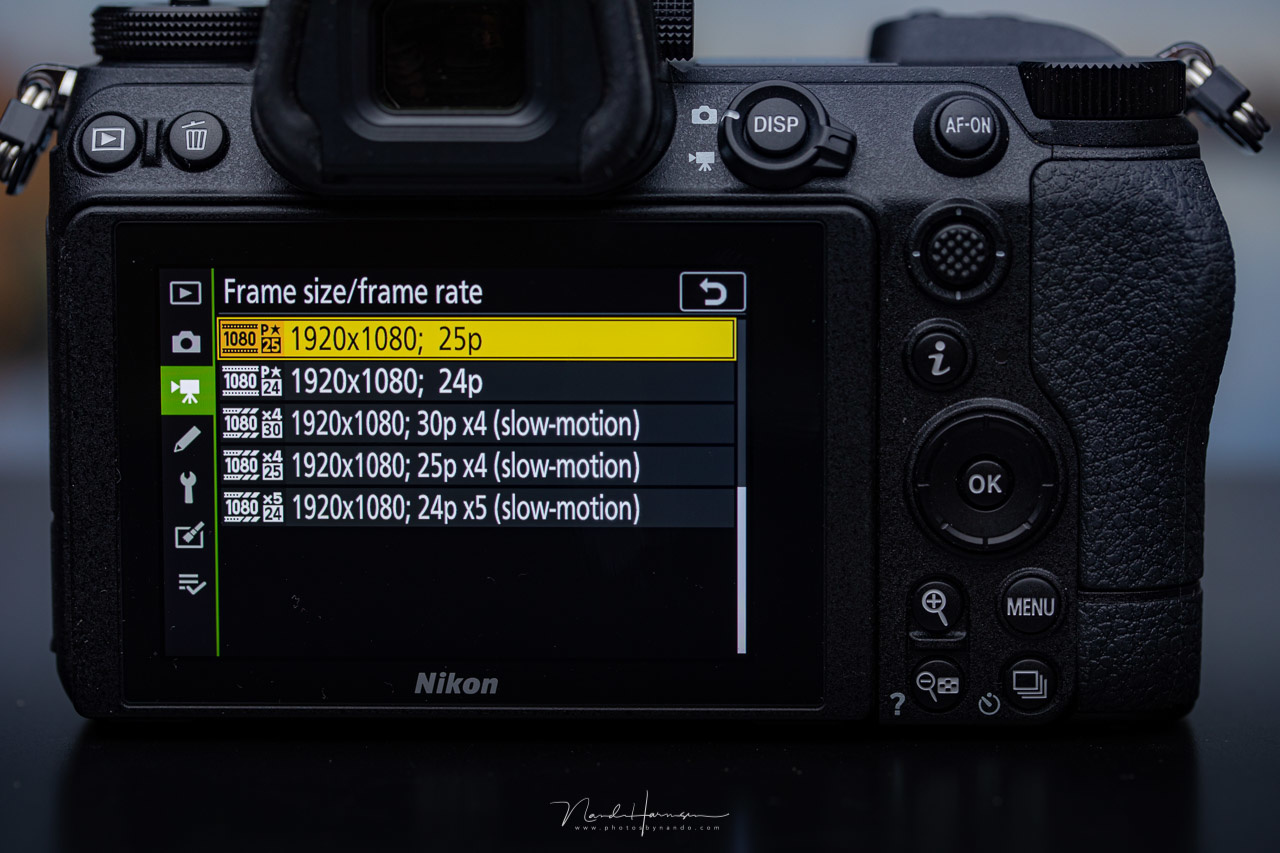
Besides the full HD settings, the Nikon Z6 II will also get 4K 25fps with the update in February 2021. It now also has eye-AF.
My Conclusion About the Nikon Z 6II
I like photographing with the Nikon Z series from the moment I used the Nikon Z 7. It is a great camera that is a lot of fun to use. It delivers good quality and it has tons of options. The Nikon Z 6II has a lot of improvements over its predecessor, and I dare to say it is a better camera altogether.
Although some improvements are not that significant and can be considered as just nice additions, there are a lot of things that should have been in the first version. I believe Nikon released the Z-series mirrorless full frame cameras too soon, thus introducing a camera that wasn’t quite finished yet. The Mark II version is the camera that the Mark I version should have been.
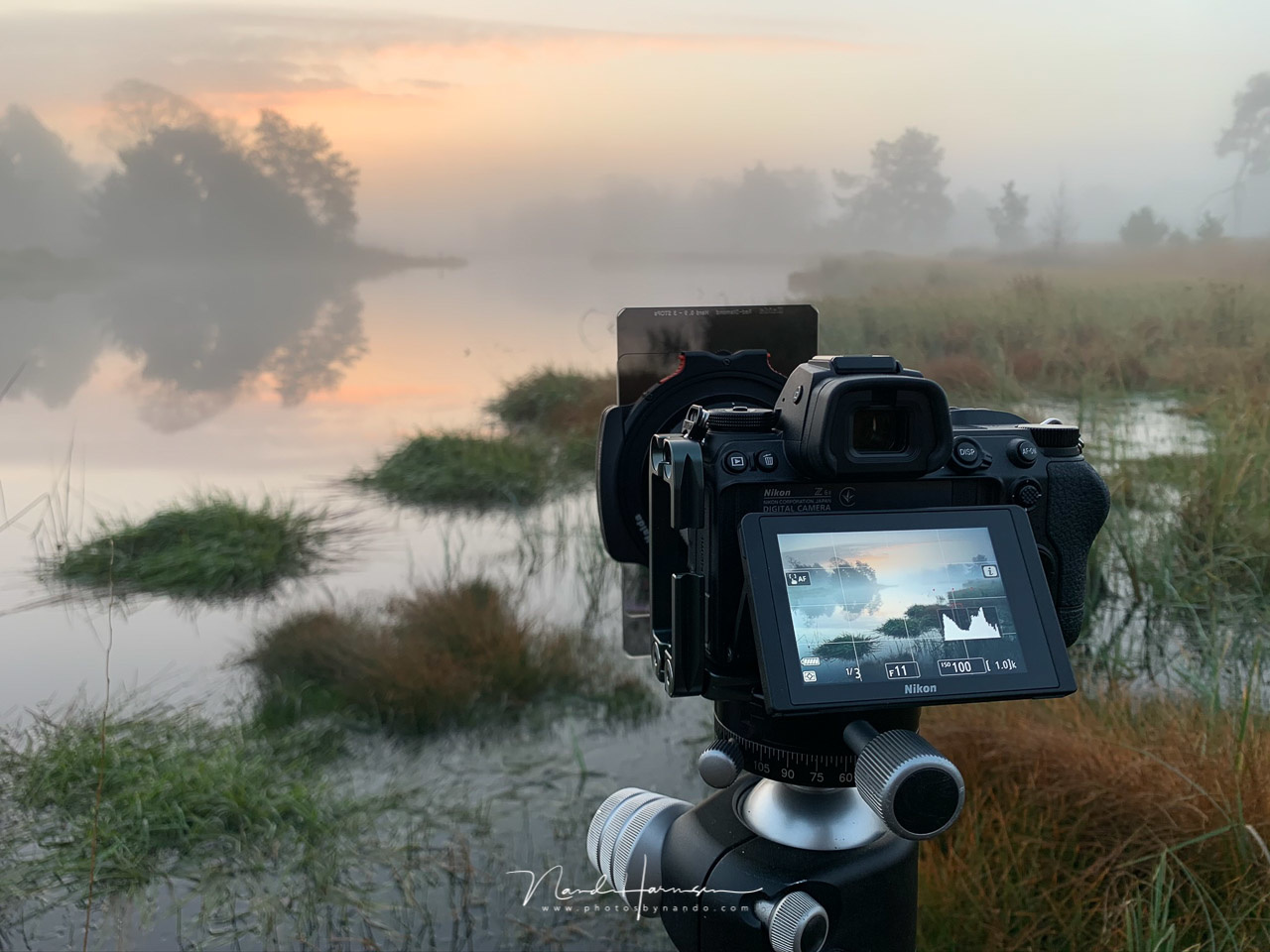
Photographing with the Nikon Z6 II was much fun, both for landscape photography and portrait photography. I wouldn't choose it for action photography, but for an occasional action shoot it will suffice
Still, with all its improvements the Nikon Z 6II still has some annoying issues. The first is the EVF blackout. Even with its improvement, it is still too long. The second issue is the lack of an automatic detection between human eyes and animal eyes. You need to switch between the two, which is frustrating at times. Too bad the animal Eye AF doesn’t work with a more extensive range of animals.
The Nikon Z 6II is no perfect camera, but I do believe the Nikon Z 6II is an amazing camera. It does a great job in many kinds of photography. If you are an action photographer, shooting sports and that kind of thing, the Nikon Z 6II is not the best camera for you.
What I Like
- Good ergonomics
- Well sized and balanced
- In-Camera Image Stabilization
- Eye-AF for people and animals, also in wide field-AF
- Eye-AF during filming
- Eye-AF works very well under most circumstances
- Tilted LCD screen
- Good implemented touch screen functionality
- Double card slot (XQD/CF Express Type B and UHS-II SD)
- Improved battery (10% larger capacity)
- Time-lapse and interval movie available
- Good ISO capabilities
- Enough customization possibilities
- Increased speed (14 fps instead of 12 fps)
- Increase buffer (124 raw files instead of 35 raw files)
- Shutterspeed adjustable up to 900 seconds in manual
What I Don’t Like
- EVF blackout makes following moving subject very difficult
- Eye AF has difficulties detecting eyes that are small in the frame
- Eye AF for animals is very limited
- No automatic switch between eye-AF for animals or humans
- Autofocus assist light is extremely bright
- No swipe AF function
- Changing AF point with the joystick feels slow
- You need to pay for the raw file movies capability
- The 4K 25 fps upgrade is with a 1.5x crop
Is It Worth the Upgrade
Although the Nikon Z 6II is the second edition of the first Nikon Z6 from 2018, both are still available. It means you can choose between the two. It may seem strange, but I think the improvements are less valuable for some photographers. Not everyone needs two card slots or improved video capabilities. Perhaps you don’t use Eye AF that much, or AF tracking as a matter of fact.
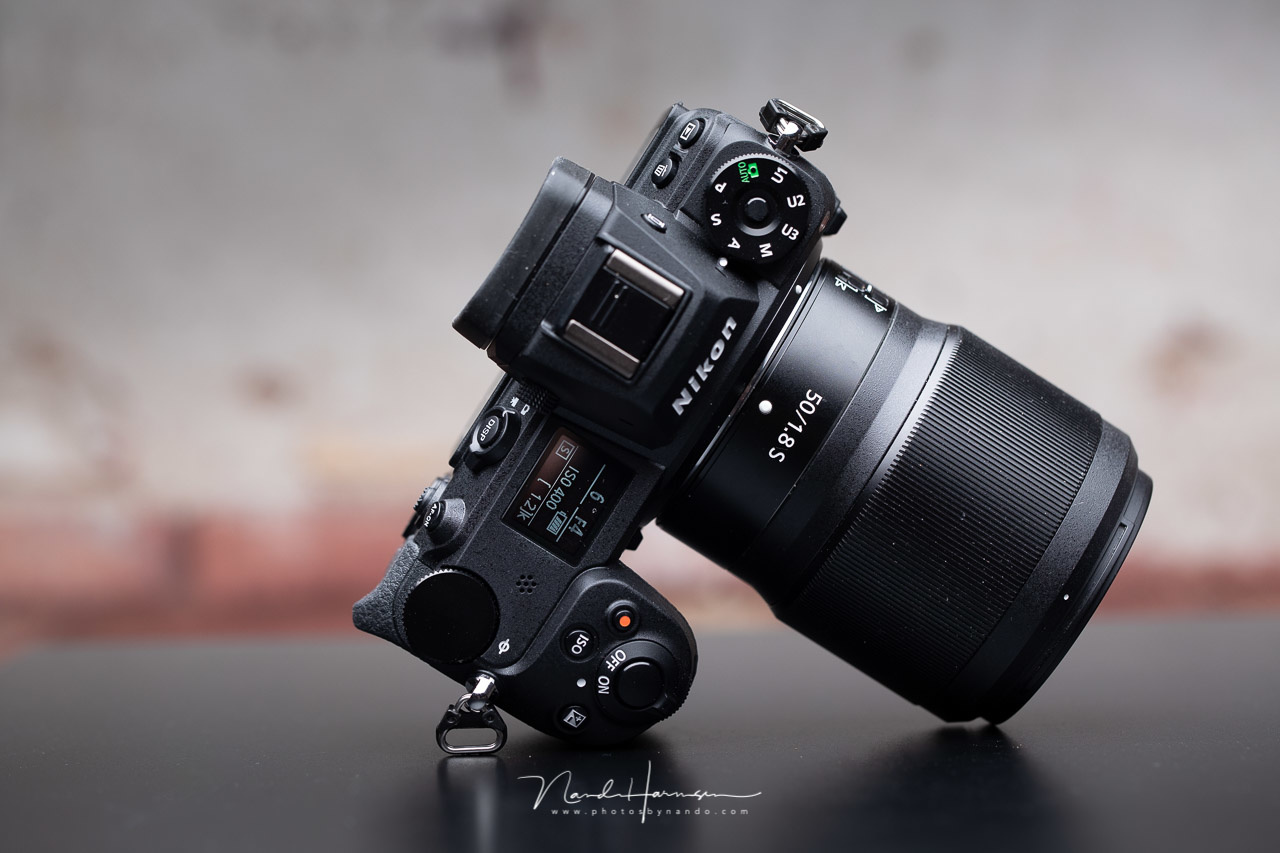
Should you go for the mark II, or continu shooting with the mark I? That's up to you. If the updates are of less importance to you, it might be enough to keep on using the mark I.
For a landscape or a real estate photographer, for instance, the first Nikon Z 6 is a very capable camera, and it performs very well. The improvements may not be that important for such a photographer. If you already own a Nikon Z 6, and you don’t use the changes Nikon made to the Nikon Z 6II version, the upgrade will be not necessary and perhaps even a waste of money. But if you are a portrait photographer the improved Eye AF will be very valuable. It might be worth the upgrade.
Are you planning to buy a Nikon Z6 camera, or are you in doubt about making the upgrade? You need to take a good look at the improvements of the Mark II version. Ask yourself this: will I ever use this option for my photography? If you know the answer, you might know what to do.
What do you think about the improvements Nikon has made to this beautiful camera? Do you think it's worth it, or not? I would also like to know your experience with this camera, if you own one. Please let me know in the comment below.
If you're passionate about taking your photography to the next level but aren't sure where to dive in, check out the Well-Rounded Photographer tutorial where you can learn eight different genres of photography in one place. If you purchase it now, or any of our other tutorials, you can save a 15% by using "ARTICLE" at checkout.

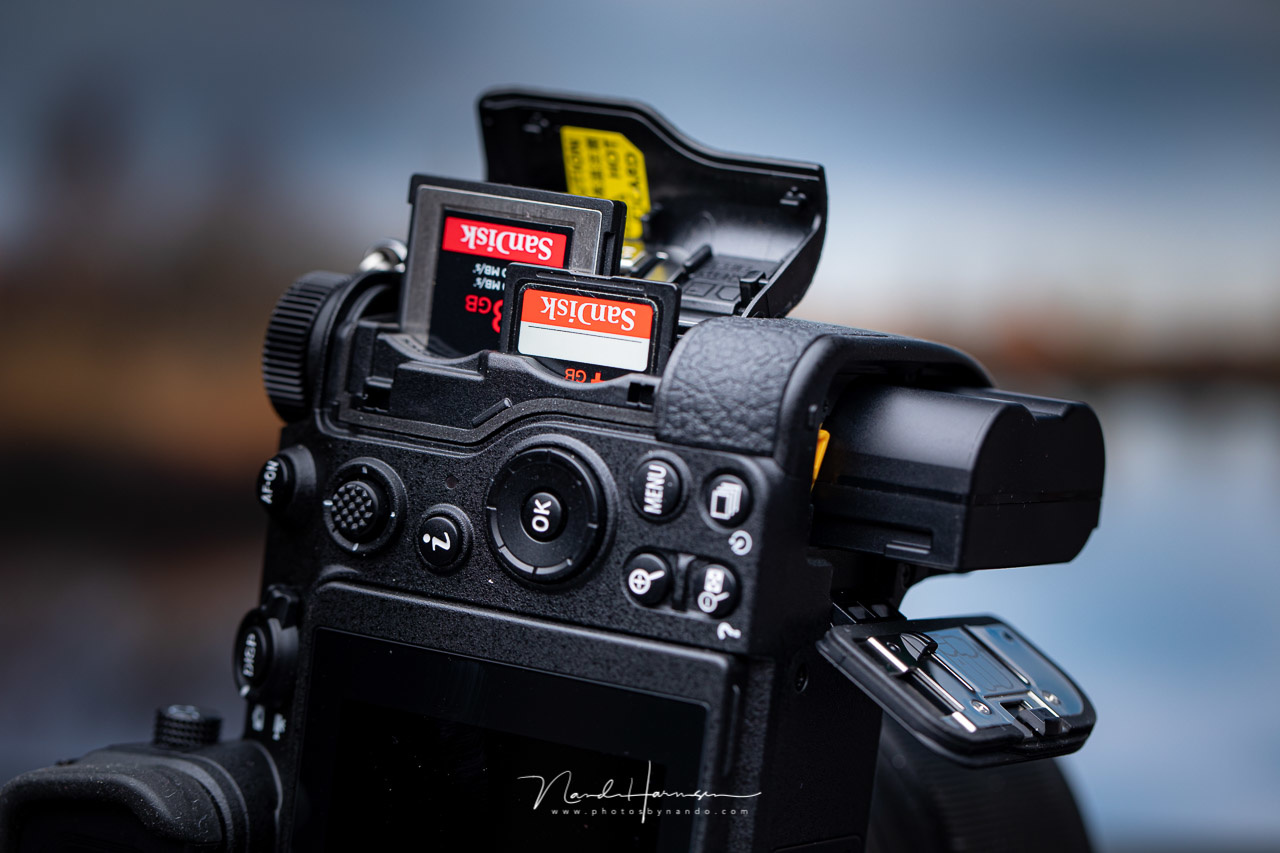


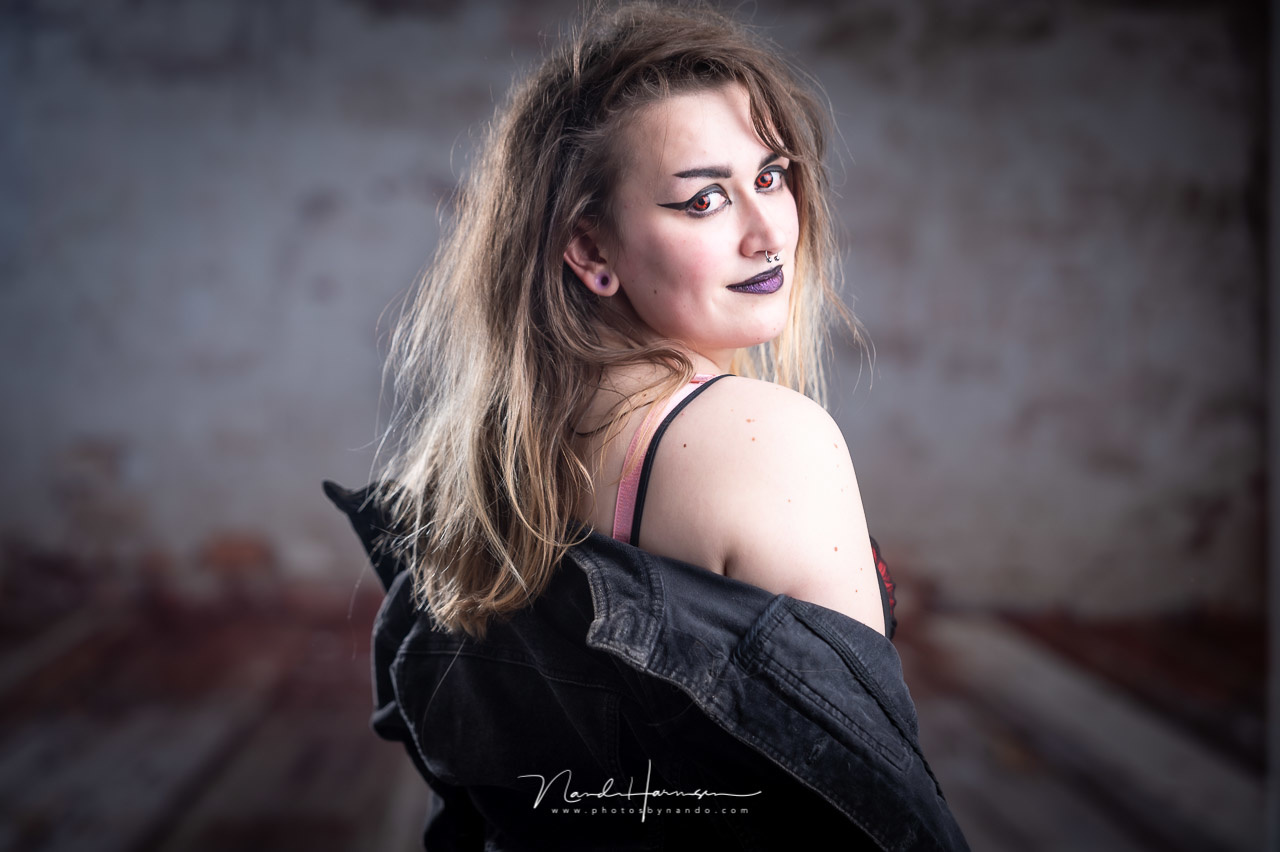








It's not a "Mark II", it's simply a "II" (according to Nikon). Semantic yes, but Canon uses "Mark", Nikon doesn't.
Oke... nevertheless, version II
Just noted ...
' ... But if you are a portrait photographer the improved Eye AF will be very valuable. It might be worth the upgrade ...'
I think you may be misleading people ... the 'Improved Eye AF' you mention is nothing to do with the later version of the Z6 ... you get this 'Improved Eye AF' upgrade in both the Nikon Z6 and the Nikon Z6II via the software upgrade or as they call it Firmware upgrade ... which the same on both models
That I didn't know. But the second processor does makes a difference, I'm sure. And the eye AF with wide field. So I do believe it will be improved over the first version.
Indeed. The second processor probably also allows or that larger memory buffer. I don't think any one ever complained about having more processing power lol.
I am actually sending my Z6 ii back-the autofocus is miserably inconsistent. When it worked the images are stunning, the other 90% of the time it was frustrating. I am going back to my D750.
Really? I don't think that is normal. It is not top of the line, but it shouldn't be that bad.
Support said "it might be a sensor issue." They looked at some images.
And they didn't replaced the camera? Or didn't you want to try it?
I am swapping it for a d780. No EVF blackout etc. My next one will be a canon but I cannot justify the cost of switching glass at this point.
How would you say the the viewfinder blackout and AF performance compare to a DSLR, specifically when shooting action? Specifically, I myself have a D7200 and a D610, but have been looking to upgrade to a mirrorless. For pretty much everything else, I'd imagine the mirrorless would be better, but is the blackout significantly worse? Or is the improved AF tracking performance and accuracy going to somewhat compensate for that when it comes to the rate of keepers. Looking for some actual real-life experiences on this, before I spend too much money. Thank you!
The focus on the mirrorless is slower and hunts often at least on the Z6ii. The EVF blackout was certainly annoying. My big problem was the miserable lack of consistency with anything moving, especially birds. When it worked the images were stunning for sure. But a 10% keeper rate???? I am going to a D780. The EVF was great for landscapes-easy on the eyes at sunrise and sunset. For birds it was agonizingly slow,,,,,,,,
Your experience is with a camera that wasn't working as it should be, as you explained. So be careful with this sort of advise. It should not be based on a defective model.
The blackout is more obstructive compared to a DSLR. On a DLSR you have the mirror that is going up and down, but that is no problem. WIth the EVF of the NIkon Z 6II your image in the viewfinder has a lag that makes it difficult to follow objects.
The AF works fine, fast and accurate. But if you want to use eye-AF your subjects eyes need to be large enough in the frame.
As a response to Graig Hennie, the keeper rate with moving subjects is far greater than 10%. But he had a malfunctioning Z 6II, as he explained
It's much better than either one of those cameras. The blackout is comparable. I don't consider it an issue and I came from a D810. I had the D810 alongside the original Z6 and I found myself reaching more for the Z6. The D810 is a great camera and it's one of my all-time favorites, but the Z6 makes life easier for me. Now I also have the Z6II. The camera is a joy to use, but you have to try it out and determine if it fits your use case.
Using my Z7 with the electronic shutter there is no EVF blackout & I'm sure the same works for the Z6, Z6ii, & Z7ii...
two points that I think you could have touched on 1. Animal eye autofocus is only for cats and dogs so trying to use it on anything other than a cat or dog is an exercise in futility(at this point). 2. there is no blackout at 12-14fps because the EVF isn't a live view at that frame rate. At the fastest frame rates the EVF shows a slide show of the last image captured so that's why you were falling behind on subjects moving across the scene. The EVF is a live representation of the scene only at 5.5 fps with some minimal blackout. using the fast frame rates works for stationary animals or animals coming at you but not so great when you need to pan. People have reported getting used to the delay and making it work though, still not ideal though. I'm on the fence I really like most of the specs and the ergonomics of the Zii cameras but the AF is a little lacking still and the lag at faster frame rates makes the camera less useful for wildlife, which is what I would want it for. Decisions decisions ...